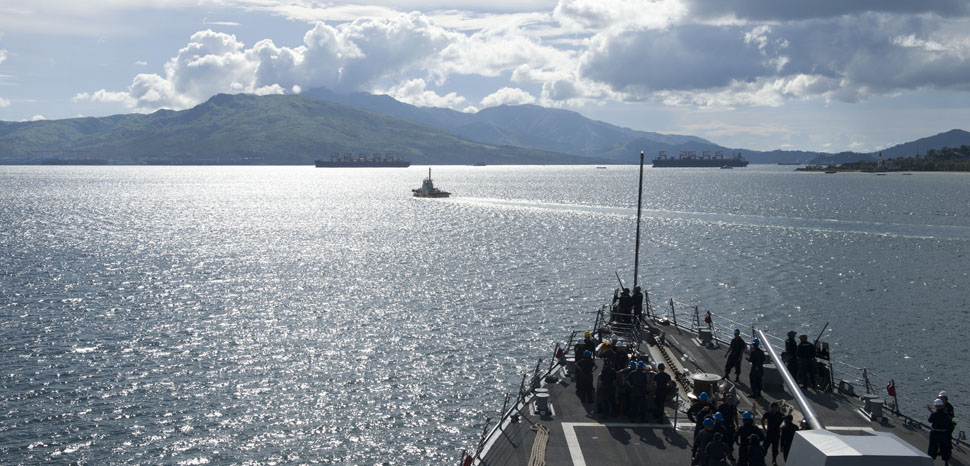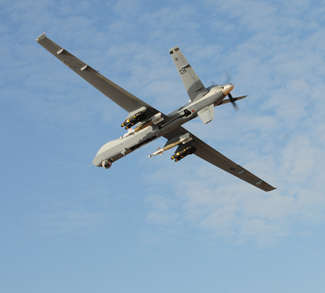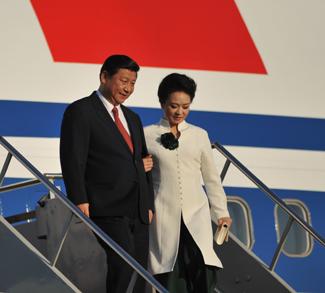As the Philippines geared up to celebrate the Independence Day from Spain, news broke of yet another clash in South China Sea involving a Chinese vessel and a Philippine boat. Manila was quick to condemn Beijing for sinking the vessel and endangering the lives of 22 crew members that were saved by Vietnamese fishermen. This is not the first time in recent history that tensions of such magnitude erupt in disputed maritime zones between the two nations. In 2012, the Philippine Navy confronted Chinese vessels near Scarborough Shoal for alleged illegal fishing, leading to a tense naval standoff. The negotiations collapsed quickly, triggering deployments of warships from both sides as well as economic punitive actions.
The outcome of the standoff was Manila’s eventual loss of de facto administration of the shoal. Part of the reason was of course the absence of a coherent Washington-Manila engagement that would have had a strong deterrent effect. Alas, the reluctance of the Obama Administration to take a more decisive stance turned out to be detrimental, further fueling president Rodrigo Duterte’s anti-US rhetoric and his calls for increased cooperation with Beijing after assuming office in 2016.
Although the Mutual Defense Treaty (MDT) between the Philippines and the United States was signed in 1951, the two states go way back. In fact, the Philippines occupies a special place in Washington’s expansionist experiment following the closure of the American frontier. As Robert Kaplan writes, “America’s first invasion of a large and populous country occurred in the Philippines in 1899, followed there by our [American] first full-fledged nation-building experience.” Indeed, the end of Spanish-American War was critical for American policymakers in overseeing the political transition in former Spanish colonies including the Philippines. Furthermore, President McKinley chose Elihu Root to fill the position of the secretary of war in order to achieve this goal. Root would become a key figure in reorganizing the department to better meet the new requirements. Hence, the establishment of the Division of Customs and Insular Affairs to accelerate the nation-building efforts in the Philippines.
Five years after the defense treaty was signed in 1951, Naval Air Station at Cubi Point (Subic Bay) officially opened its doors in 1956, becoming one of the most grandiose projects ever completed by the U.S. Navy. The same year Vice President Nixon and president of the Philippines Ramon Magsaysay revisited the first base agreement of 1947 to ensure that the Philippine government had full control over the bases operated by the United States. This was primarily a response to the growing nationalist outcry in the Philippines. Constant changes to the existing base agreement continued occurring up until 1980s per the Philippine government’s requests. For example, in 1983 the U.S. government agreed to periodically notify Manila on the size of the permanently stationed troops as well as weapons systems that entered the country.
The final blow to U.S. installations in Subic Bay came in 1991 when the Philippines demanded the U.S. departure in 1992, effectively ending a US military presence that dated back to 1898. Although then president Corazon Aquino was in favor of keeping the Americans in Subic Bay, the Philippine Senate was adamant to not renew the treaty. The main reason was the dominant sentiment in the Senate where American presence was seen as a textbook example of colonialism.
To compensate for the loss in the Philippines, the U.S. government began looking for alternatives. Despite its lacking the same advantages of Subic Bay, Singapore agreed to strike a deal with Washington. In 1992, command of Logistics Group Western Pacific was transferred from Subic Bay to Singapore. And though it is true that Singapore did not agree to host the U.S. troops on a permanent basis, its constructive cooperation was much appreciated in Washington. For instance, in 1998 the leadership in Singapore made a decision to build the Changi naval base for the purpose of welcoming American aircraft carriers and submarines. The construction cost around $60 million and was tailored towards satisfying the needs of the U.S. 7th Fleet.
However, the consequences of American withdrawal from Subic Bay and the declining relations between once strong allies quickly came to light. Only three years after American departure, China extended its infrastructure projects on Mischief Reef nearby the Philippine territory in 1995. Ever since, the Chinese have expanded their influence without facing any serious pushback. The periodic protests from the Philippines against Beijing’s expansion into its adjacent waters have fallen on deaf ears. And recent Chinese behavior vis-à-vis Manila is nothing but the product of the complacent state of U.S-Philippines relations.
Arguably, much of the blame falls on Duterte, whose obsession with anti-Americanism has stalled the improvement of bilateral relations with the U.S. For instance, Washington and Manila seemed to be setting aside their grievances by signing the Enhanced Defense Cooperation Agreement (EDCA) in 2014. Apart from strengthening the alliance, EDCA seeks to serve as a check against China’s further actions in South China Sea. Per the agreement, the U.S. was allowed to build new bases and deploy troops on a rotational basis. However, the future of EDCA remains unclear due to Duterte’s skepticism over the long-term alliance with the United States. To be sure, Duterte significantly scaled back his threats of eliminating the US-Philippines defense treaty after the United States provided crucial support to Philippine troops in their fight against jihadists associated with ISIL in 2017 in Marawi.
Despite Duterte’s efforts to slowly undermine the EDCA, the military establishment of the Philippines has adopted a more pragmatic approach. Namely Delfin Lorenzana, Secretary of National Defense of the Philippines, was an important figure who pushed back on Duterte’s hostility against the EDCA. Nevertheless, Lorenzana too wants a more resolute stance from the U.S. side, as evidenced by his famous order to “maintain it [the MDT], strengthen it, or scrap it.” The main issue stems from the ambiguity of MDT regarding the scope of America’s defense of the Philippines in case of an external attack. The Philippine government is correct to assess that for now the mainland does not face any possibility of a large-scale invasion that would trigger Articles IV and V of the treaty. The looming question is whether the MDT covers the Philippine possessions in South China Sea, which once again became an issue during the Scarborough Shoal standoff.
The United States continues to enjoy much support among ordinary Filipinos in spite of these developments. According to an opinion poll conducted in 2016 in the Philippines, 76% of respondents claimed to have “much trust” in the United States and only 22% gave the same answer for China. Additionally, the military still remains overall pro-American despite growing nervousness in the defense bureaucracy.
Nonetheless, taking the alliance with the Philippines for granted would be a grave mistake. This bilateral relation has suffered much and will continue to do so should both sides fail to bring some clarity on the future of the alliance. Without a solid bilateral deterrence, the Philippines will continue ceding its possessions in South China Sea dramatically weakening both its own and American positions in the region. Incidents like the recent sinking of a Philippine boat do not emerge in a vacuum. China’s emboldened actions are the direct results of the perceived anemic state of Washington-Manila relations.
Erik Khzmalyan is a geopolitical analyst specializing in U.S. foreign policy, national security, and strategy. He holds an M.A. in Statecraft and National Security Affairs from The Institute of World Politics in Washington, DC.




